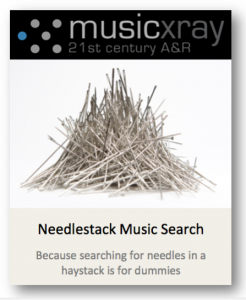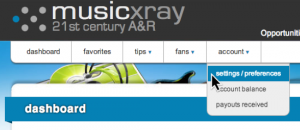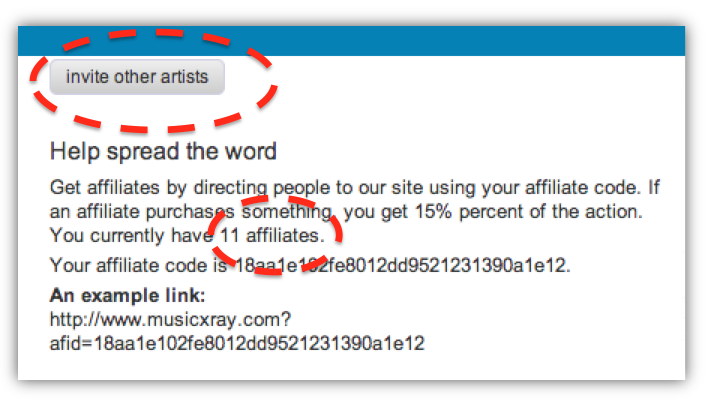 Better late than never. But they won’t work.
Better late than never. But they won’t work.
I’m fond of saying that in the race to adopt new technology the music industry finishes just ahead of the Amish. And while I wholeheartedly applaud the late embrace of technology and data in the context of the recent deals with Twitter and Shazam, in my opinion, these particular deals won’t generate the hoped-for results.
The deals I’m referring to are the recent partnerships between Twitter and former Warner boss Lyor Cohen’s new 300 label and the partnership announced yesterday between Shazam and Warner Music Group. Both deals seek to leverage the data generated by the two tech companies to help identify emerging songs and talent.
Both Shazam and Twitter have had for several years the vast amounts of data that 300 and Warner want to tap. And both tech companies operate primary businesses that have nothing to do with helping the industry achieve the goal of “early discovery”. Rather, they generate an enormous amount of potentially relevant consumer behavior data and these music companies are going to apply their resources to try to make sense of it. Presumably, the goal is not only early discovery, but also the reduction of risk when Warner and 300 invest in promoting the music, since they will likely have a lot of clues about where they should spend their resources both demographically and geographically. It follows that since Shazam users are already performing an act that has them engaged with the music, Warner sees the deal as providing a channel into a receptive market.
1. Social signals are highly unreliable when it comes to emerging music.
I am certain that these deals will generate occasional successes. But I’m also certain they will not constitute an efficient and consistent method of finding the needles in the haystack. Social signals already constitute an arms race between those trying to make sense of the data and those trying to spoof it. The spoofers only have to continue to lead that race for the data to be too noisy to be consistently useful. Regardless of the number of data scientists thrown at the problem, if the signal to noise ratio is too high, there’s no useful data of which to make sense.
With 11 hours of audio content uploaded to SoundCloud every minute (leaving aside YouTube, BandCamp etc), it’s not even always about the false positives spoofers can cause. It’s also about the amazing songs and artists that don’t bother to spoof (or aren’t good at it) or even bother to try to cut through the noise. I’m talking about the 4m+ tracks on Spotify that have never been heard, not even once – or the 32% of songs on iTunes that sold one copy or less. Much of that music probably sucks – but not all of it and the great stuff will never be detected by the data Twitter and Shazam can provide.
2. Social signals are a lagging indicator and do not highlight what will gain traction, only what’s already gaining traction.
Furthermore, both Twitter & Shazam are, at best, only able to assist in early discovery, as opposed to first discovery. There’s a big difference between the two when you look at the potential return on investment for the music companies as well as the size of the opportunity itself. If Warner had been first on Macklemore & Lewis instead of just early the opportunity would have been bigger and the returns on that opportunity would have been higher.
The data provided by Shazam and Twitter will always be a lagging indicator, meaning that by the time songs and bands get meaningful traction on Twitter or Shazam, Warner and 300 will probably be second to arrive and will find early investors already there. Even if the traction were 100% organic and not generated by a financed push, the gained traction would be at least as observable to the artists and their camps as it is to Twitter & Shazam. That means worse deal terms for the music companies and a burden of finding early-stage backers most artists can’t (or don’t want to) bear.
3. Social signals leave too much behind.
Additionally, Twitter and Shazam are rarely ever going to detect the killer songs written by the non-performing songwriters, top drawer material that comes from unknown songwriters who aren’t plugged in to the industry, and bands and acts who aren’t breaking through the initial noise barriers that prevent them from getting any serious traction.
What will work.
What the industry needs is a true A&R filter. One that provides a leading indicator of success potential. One that offers true first discovery rather than early discovery. One that enables the industry to lead, taste-make, and influence rather than follow. Those who know me know I’ve been pursuing this holy grail for the industry since 2001.
The number of songs and acts that have been offered deals after having been discovered by the industry on Twitter and Shazam is unknowable, but in 2013 alone over 4750 songs and acts were selected by the industry for opportunities at Music Xray. That’s over 90 a week or about 1 every 2 hours.
I spent a good part of last year arguing in online public forums and then privately with Jack Ponti, a well-known industry veteran who opposed Music Xray’s approach to solving these A&R filtering challenges. But after months of back-and-forths and eventually a few afternoons spent with a whiteboard hashing out the current product and incorporating elements of Jack’s views on market segmentation, we were able to come together to construct a product road-map for 2014-15 that will perform even beyond my previous expectations, which of course were already high.
Music Xray seeks to be the industry standard for A&R filtering and music supervision tools. It’s a collaborative effort of 1200 early-adopting industry professionals who all make their living with their ears. They enact an open door policy to unsolicited submissions via Music Xray but Music Xray’s toll-booth business model puts the artists themselves in charge of the first level of filtering. Sure, some junk gets through but it’s filtered out quickly leaving only the top material to be heard by most professional users. Many of the submissions that come through Music Xray are songs that have never been released in any way, shape, or form. Shazam and Twitter are never going to shine a light on them.
Music Xray is currently used by 17 major labels but it’s still largely the forward thinkers who are benefitting the most. In fact, not all professional users of Music Xray even take advantage of the site’s most advanced and useful features. But over time, as we continue to insist on product excellence, Music Xray’s results will scream high above the din of the 11 hours of content uploaded to SoundCloud each minute. And if only 0.01% of that music has any commercial value at all, that’s over 90 minutes per day of commercially worthwhile music that ought to be discovered by the industry.
Mike McCready
Co-founder & CEO
Music Xray















